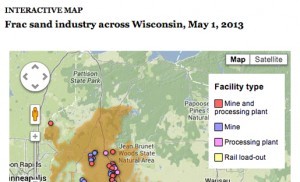(This article first appeared on June 10, 2013 in MediaShift.)
A new study of nonprofit journalism sites declares that “achieving revenue diversification… is still a formidable task” for the sector, which reported devoting only 10 to 24 percent of staff hours to business development.
There are few surprises in the latest nonprofit journalism study by the Pew Research Center’s Project on Excellence in Journalism. There are still, however, many questions to be asked. And there is much merit in taking a deeper dive into discrete clusters of nonprofit news sites.
Challenges for Nonprofit News Orgs
The study cites increased competition for grants, fewer follow-up grants awarded by seed funders and a “nonprofit culture that prizes program spending over business development” among the key challenges for nonprofit news operations. I see a few more challenges, but I also agree with the 81 percent of sites who expressed optimism that they will be financially solvent in five years. Most said they had brought in more money than they spent in 2011 and had some cash reserves on hand. Among the key challenges cited in the report:
- Competition for grants. Much as in the tech startup arena, media entrepreneurship is at an all-time high. PEJ said 55 percent of its respondents pinpointed increasing competition for grants as their greatest challenge. There are a lot of good media ideas out there for funders to sponsor. As someone who has both given and received grants, I always tell my grantees to think of their seed funding as getting them to MVP -– a minimum viable product or a proof-of-concept website that they can use to leverage new funding elsewhere. Above all, sites should not pitch their efforts as journalistic works of art, but rather as enterprises engaged in doing a job that needs to be done.
- Fewer renewal grants. It is rare for foundations to keep funding at their initial level. The PEJ report says that 61 percent of responding sites started with a grant that comprised one-third of their funding and most of those grants were at least $100,000. However, only 28 percent (16 sites) had those grants renewed. “All in all, then, while seed grants may help an outlet get up and running, they don’t seem to help long-term sustainability,” the report said.It would be helpful to elicit in a later study such things as:
- – How well did the original grantee perform and does it need help documenting the level of audience engagement with their work?
- – Were metrics collected that tracked impact?
- – Did a funder move to a new strategy?
- – Did the grantee have a new idea that fit a funder’s mission?
- – Would a funder be amenable to a challenge grant, requiring the grantee to find matching support?
- Philanthropic tendency to focus on program funding. Throughout, the study quotes nonprofit organizations as saying funders have a culture of focusing on programs instead of business development. I must note that for nonprofit news sites, several foundations have done quite the opposite: The Knight, Patterson and Ethics and Excellence in Journalism Foundations and others have funded concerted efforts to try to boost the business skills of many of these entrepreneurial news operations.That said, it’s not clear how the nonprofit news operations themselves experience this cultural tendency. I suspect they would have said, if asked, that they felt stymied by the lack of opportunities to apply for unrestricted operating support, the crown jewel in the grant world. Instead, they must dream up specific projects with a portfolio of deliverables that fit a funder’s mission. So if you weren’t planning on an environmental reporter, but you could get a grant to hire one, you might add it to your coverage plans.
In most cases, foundation funding accounted for more than half the sites’ total revenues. Donations from individuals, advertisers or sponsors, events or syndicated content comprised much smaller income streams.
Corralling Data

The Wisconsin Center for Investigative Journalism was the first to report on the economic and environmental impacts of a boom in frac-sand mining in Wisconsin.
While any information on the emerging nonprofit news landscape is welcome, PEJ’s efforts to draw sweeping conclusions from such a disparate pool of subjects complicated its task. Included in its study of 172 nonprofit news operations were sites that had been around for less than five years to those that have survived for 25 years; there were micro operations that bring in $50,000 year and those generating $1 million or more in revenue. It’s hard to compare the long-lived Pew-funded Stateline.org with a site such as Wisconsin Watch, which was threatened to be removed from the University of Wisconsin last week by some state legislators. As well, PEJ’s study encompassed an almost-incompatible mix of sites from statewide investigative news outlets to hyperlocal community news sites, and niche sites on health or arts and culture.
I’m not sure it makes sense anymore to corral data on just nonprofit news operations. As many nonprofit sites are trying to sell ads, solicit individuals, and generate income from events and training as for-profit sites are, and there are for-profit sites looking for nonprofit sponsors that would allow them to apply for grants.
Zeroing in on discrete sectors of either nonprofit or for-profit sites in future studies might surface new trends. Health or arts sites, for instance, can draw from entirely different revenue opportunities than statewide investigative news sites. Are the investigative news sites (there are now some 80 members of the Investigative News Network) moving to take ads from government agencies, lobbyists or candidates for office? Are nonprofit news sites taking steps to accept sponsored content from local retailers, law firms, or health care providers? Targeting discrete clusters of sites might help unpack the secret sauce that has enabled such sites as New Haven Independent or Voice of San Diego to be around since 2004.
Nevertheless, among the study’s highlights:
- 54 percent of sites responding to PEJ’s survey cited business marketing and fundraising as their greatest area of staffing needs; 39 percent say they chiefly need more editorial employees.
- 62 percent said their greatest challenge was “finding the time” to focus on the business side.
- 55 percent of 77 sites responding said they brought in no more than $500,000 in 2011.
- 78 percent of the sites report having five or fewer staffers.
- Almost half the sites produced 10 or fewer original pieces of content in the two-week period studied. But then, few of these sites are seven-day-a-week operations.
- 77 percent produced no opinion pieces during the two weeks studied.
- Multimedia content seemed thin with only 27 percent posting non-text content such as videos or databases.

Kevin Davis
Kevin Davis
One of the business weaknesses I have observed among entrepreneurial news startups is the failure to develop their own master narratives. Building a brand is important for any enterprise. Many in the nonprofit journalism world have attended well to telling news stories in their topic areas. But they have not devoted time and attention to compiling data on audience engagement and community impact that would help them craft compelling narratives about their own efforts. These are the stories that can elicit more enduring support.
It is crucial, noted Kevin Davis, CEO of the Investigative News Network, in the report for these sites to have “a brand that your target community appreciates and supports.”







Comments are closed.